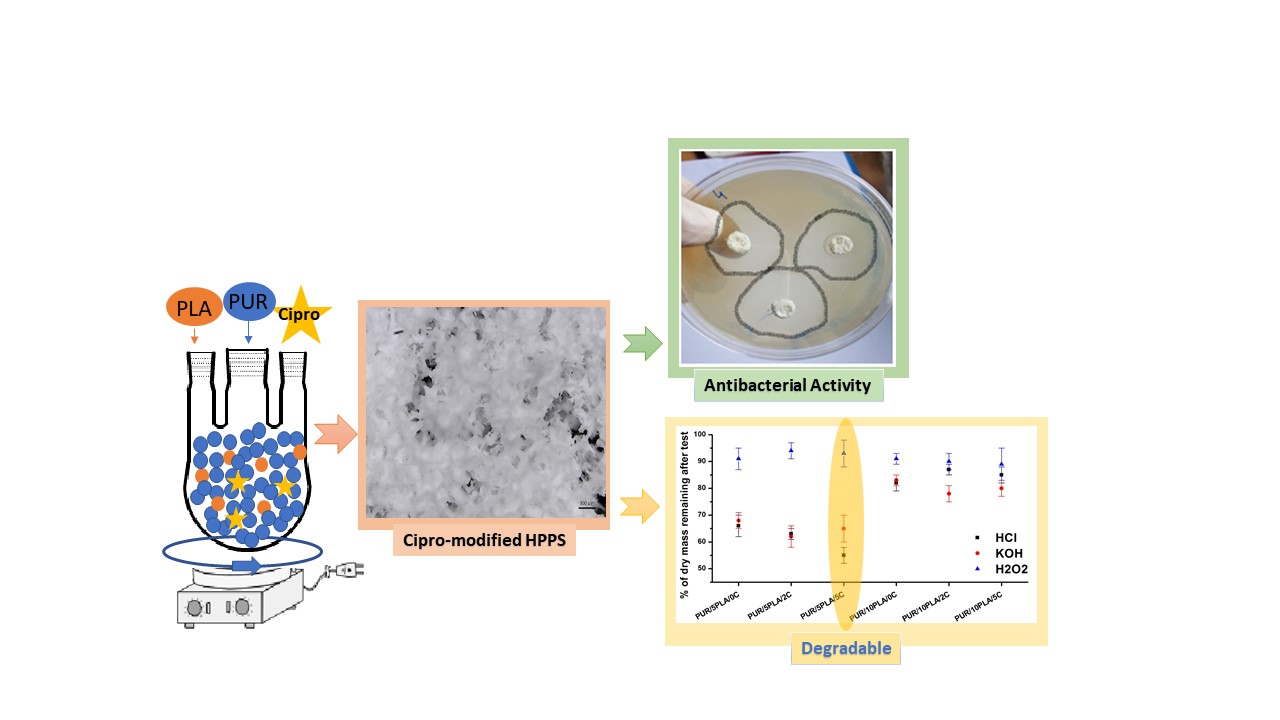The aim of performed studies was to fabricate an antibacterial and degradable scaffold that may be used in the field of skin regeneration. To reach the degradation criterion the biocompatible polyurethane (PUR), obtained by using amorphous macrodiol α,ω-dihydroxy(ethylene-butylene adipate) macrodiol (PEBA), was used and processed with so-called “fast-degradable” polymer polylactide (PLA) (5 wt% or 10 wt%). To meet the antibacterial requirement obtained hybrid PUR-PLA scaffolds (HPPS) were modified with ciprofloxacin (Cipro) (2 wt% or 5 wt%), the fluoroquinolone antibiotic inhibiting growth of bacteria such as Pseudomonas aeruginosa, Escherichia Coli and Staphylococcus aureus, which are main cause of wound infections. Obtained unmodified and Cipro-modified HPPS were studied towards their chemical composition to detect presence or absence of characteristic functional groups of PUR, PLA and Cipro, and as well to indicate the participation of hydrogen bonds in the HPPS structure in dependence on PLA addition and ciprofloxacin modification. Mechanical properties were studied to determine the possible application of HPPS as a skin tissue scaffold. Scanning electron microscopy (SEM) was used to study morphology of unmodified and Cipro-modified HPPS and to performed elementary analysis by using energy-dispersive x-ray spectroscopy (EDX) of obtained materials. Finally, the microbiological tests were performed to indicate the antibacterial effect of Cipro-modified HPPS on S.aureus growth. Performed studies showed that Cipro-modified HPPS, obtained by using 5 % of PLA, possess suitable mechanical characteristic, morphology, degradation rate and demanded antimicrobial properties to be further developed as a potential scaffolds for skin tissue engineering.

